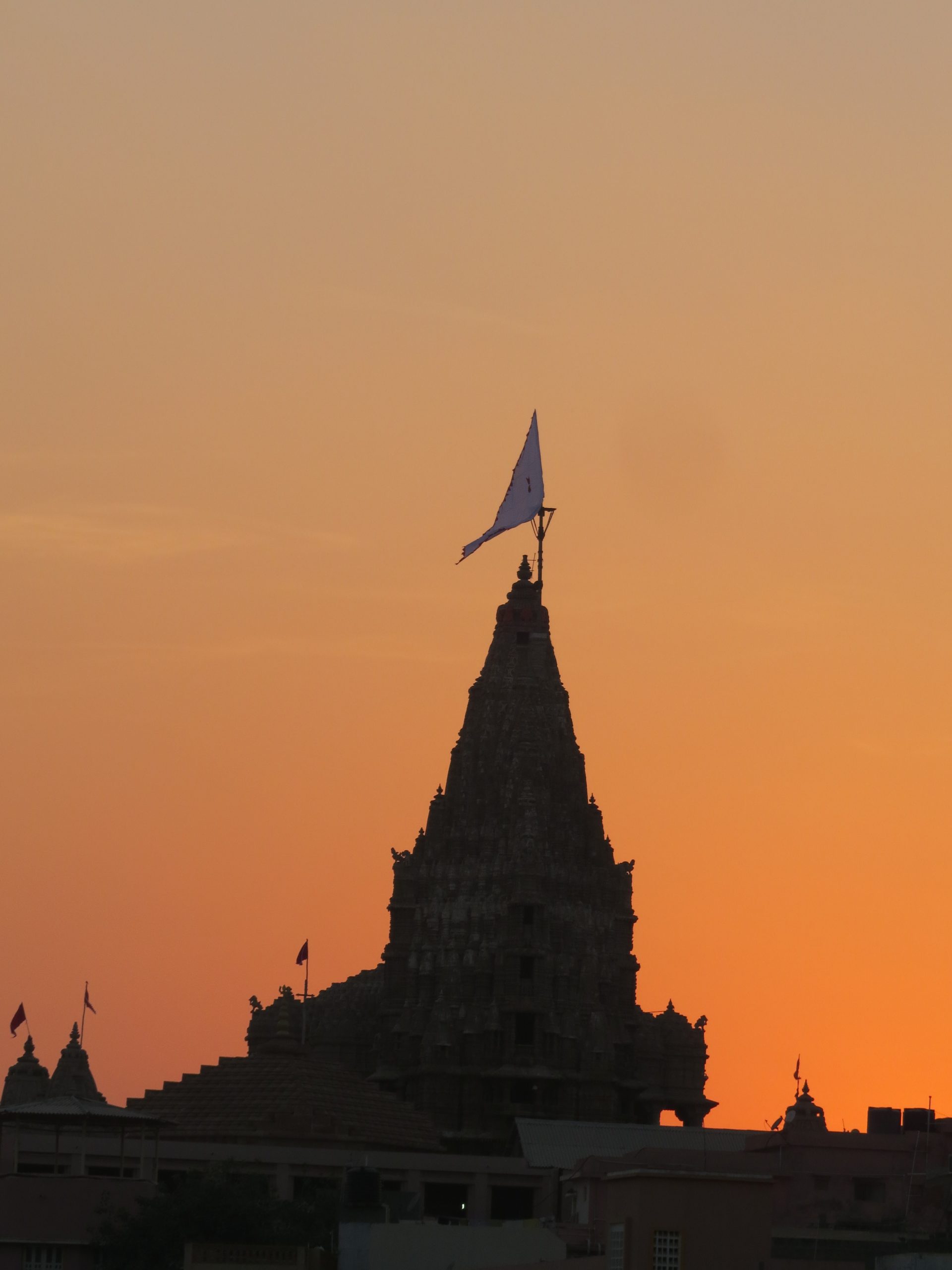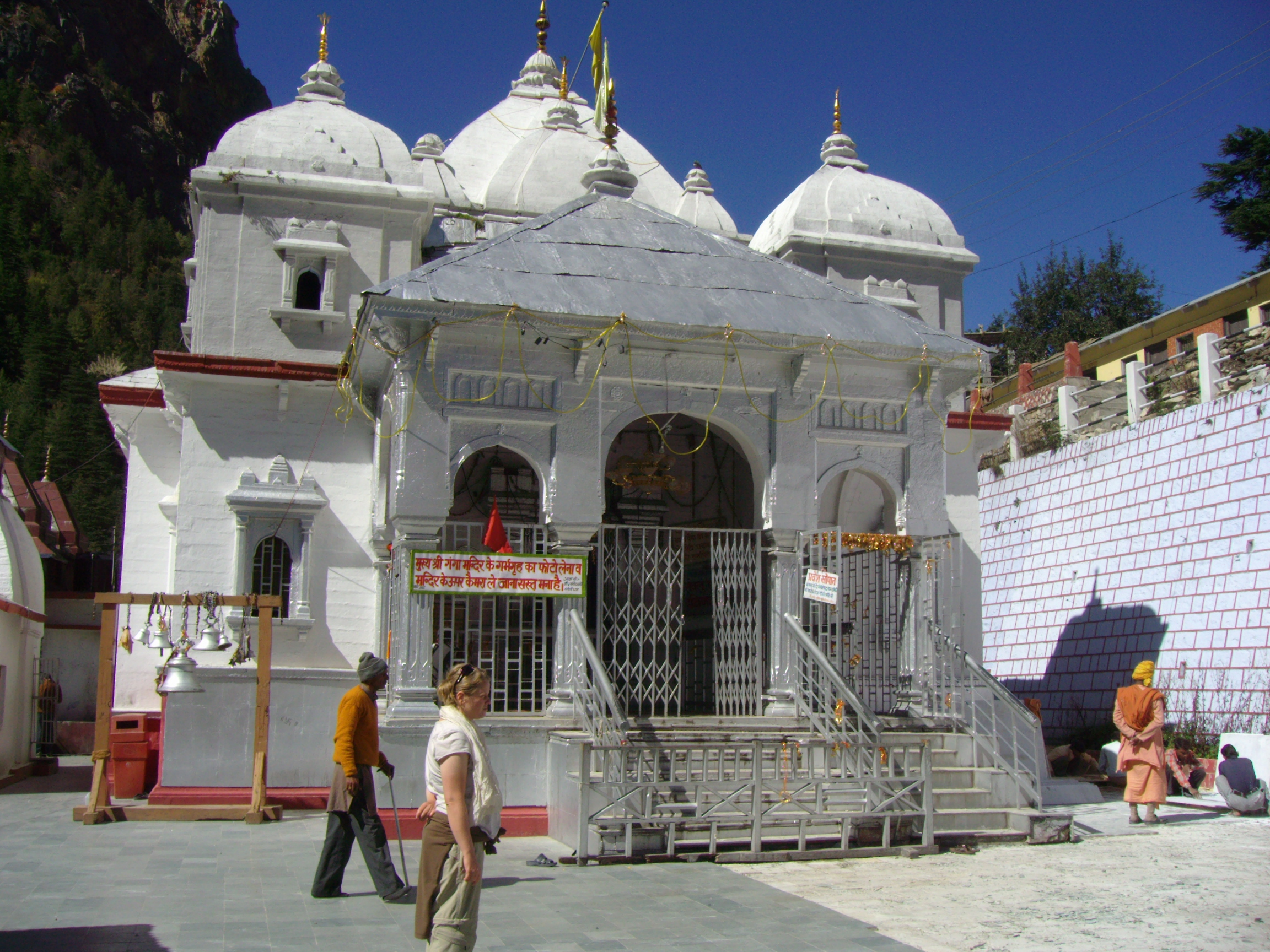21 Most Famous Temples of India You Should Visit
If you travel to any part of India, you will notice temples strewn across the landscape. These religious temples in India are a way to connect with the Almighty as well as a way to dive deep into spirituality. We’ve compiled a list of the top 21 famous temples of India by region to give you a taste of the country’s sacred side.
There is one quality that connects the dots to a deeper meaning of life among all the values and practises that bind India together: spirituality. This seemingly insignificant detail has had the greatest impact on Indians, to the point where paying obeisance at these sacred sites has become an integral part of their lives.
Also read: 15 Most Famous Hindu Temples Outside India
1. Vaishno Devi Temple
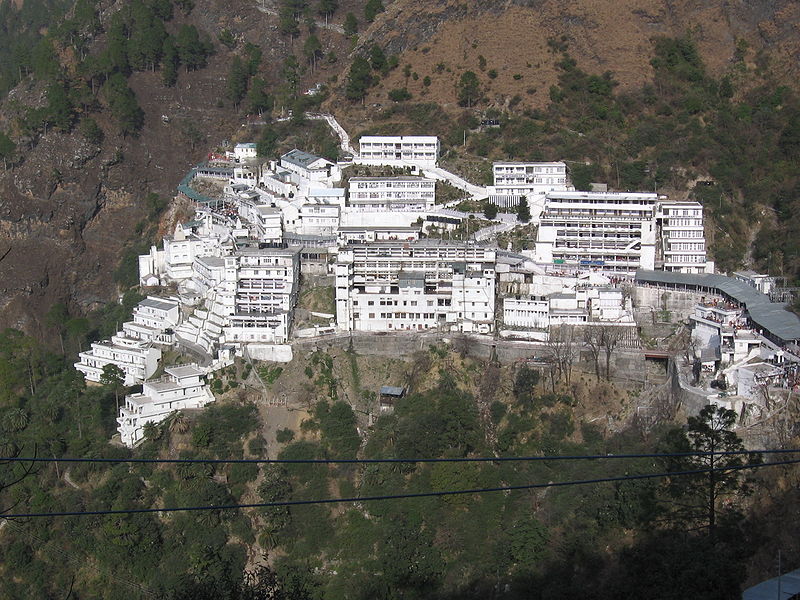
Image source: Wikipedia.org
It is one of the most famous temples of India, as well as one of the most unique. It is located in Katra town, in the Reasi district of Jammu and Kashmir. The temple is located at a height of 5,300 feet, and it requires a 12-kilometre trek to reach it. The journey is long and difficult, but those who cannot walk the distance can take a pony ride, a palanquin, or even a helicopter to get to the shrine. The temple is actually located in a cave, and there are no statues here, only three pindies (rock heads). Every year, millions of people flock to the Vaishno Devi temple. The temple is open all year round.
2. Akshardham Temple

Image source: Wikipedia.org
Delhi residents don’t need to look for or rush to another place of worship because they have the gleaming Akshardham Temple all to themselves. This temple, which was inaugurated on November 6, 2005, is located on the banks of the Yamuna River. This temple’s literal translation is “God’s divine abode.” If you want to find solace and peace in your heart, you should go to Akshardham.
Yogiji Maharaj, Swaminarayan’s fourth successor, was the inspiration for the temple. The temple follows the Swaminarayan Hinduism path and uses fine architecture to display the culture and devotional traditions. There are three exhibits: Nilkanth Darshan (Theatre), Sahajanand Darshan (Hall of Values), and Garden of India, in addition to the main shrine.
3. Jagannath Puri Temple

Image source: Wikipedia.org
Odisha takes pride in being the home of the Jagannath Puri Temple on any given day. This pilgrimage site is part of the Char Dham Yatra and is located in the holy city of Puri. The temple is dedicated to Lord Jagannath, a form of Vishnu, and is steeped in his worship. Devotees are said to come to Jagannath in order to be saved by having their sins washed away. The annual chariot festival is another reason that Jagannath is a well-known temple in India. The three main deities of the temple, Jagannath, Balarama, and Subhadra, are carried out on a chariot for a public procession as part of the celebrations.
4. Konark Temple
Source: Wikimedia Commons
The Konark Sun Temple is unique in many ways; it is one of the few famous temples of India dedicated to Lord Sun in the world. Due to its magnificent architecture, it is also well-known as a tourist destination. It’s shaped like a chariot, with massive, delicately engraved wheels that make for a spectacular sight. It is one of India’s oldest temples, dating back to around 1250 AD and located in the Puri district of Odisha. Another unique feature of the temple’s design is that the sun’s first rays fall at the temple’s entrance. The temple’s one-of-a-kind sculptures are another draw.
5. Dwarkadish Temple
Source: Wikimedia Commons
Dwarkadhish temple, the holy abode of Lord Krishna, is located in the Gujarati city of Dwarka. The temple, also known as Jagat Mandir, has two doors for pilgrims to enter and exit. Swarg Dwar (doorway to heaven) is the entrance door, and Moksha Dwar is the exit door (the doorway to liberation). The 5-story temple, which is part of the pious Char Dham Yatra, is supported by 72 pillars. The temple, which is located on the banks of the River Gomti, rises to a height of 51.8 metres and is reached via a flight of 56 steps. Lord Krishna dazzles his devotees inside the shrine with his black stone idol.
6. Khajuraho Temples
Source: Wikimedia Commons
Because there are so many famous temples of India here, it is referred to in plural form, as in Khajuraho temples. Both Jain and Hindu temples can be found here. The temple has many distinguishing features, including being a UNESCO world heritage site and one of the seven wonders of the world. Another distinguishing feature is its magnificent architecture, which includes elegant sculptures and carvings. Built of sandstone, it is built in such a way that the temple is held in place by gravity, which is a wonderful feature that demonstrates how advanced architecture was in ancient times. It is also a pilgrimage site and one of the most popular tourist destinations in the country.
7. Kailasa Temple, Ellora
Source: Flickr
The Kailasha temple is a Hindu temple dedicated to Lord Shiva and the largest of the rock-cut Hindu temples in Maharashtra, India’s Ellora Caves. Because of its size, architecture, and sculptural treatment, it is considered one of the most remarkable famous cave temples of India, as well as “the climax of the rock-cut phase of Indian architecture.” The Kailasa temple (Cave 16) is the largest of the Ellora Caves’ 34 Buddhist, Jain, and Hindu cave temples and monasteries, which stretch for over two kilometres (1.2 miles) along the site’s sloping basalt cliff.
8. Siddhivinayak Temple, Mumbai

Image source: Wikipedia.org
Siddhivinayak Temple is one of Maharashtra’s most well-known temples dedicated to Lord Ganesha, as well as one of India’s most revered. It is located in the Prabhadevi neighbourhood of Mumbai, the state capital, and is visited by devotees from all over India. The temple is easily accessible and located on the main road. There is a serpentine line of devotees waiting for darshan, or a glimpse of Lord Ganesha, on Tuesdays, which is considered an auspicious day for the deity. The sanctum’s wooden door is inscribed with Ashtavinayak or Lord Ganesha’s eight manifestations.
9. Shirdi Sai Temple
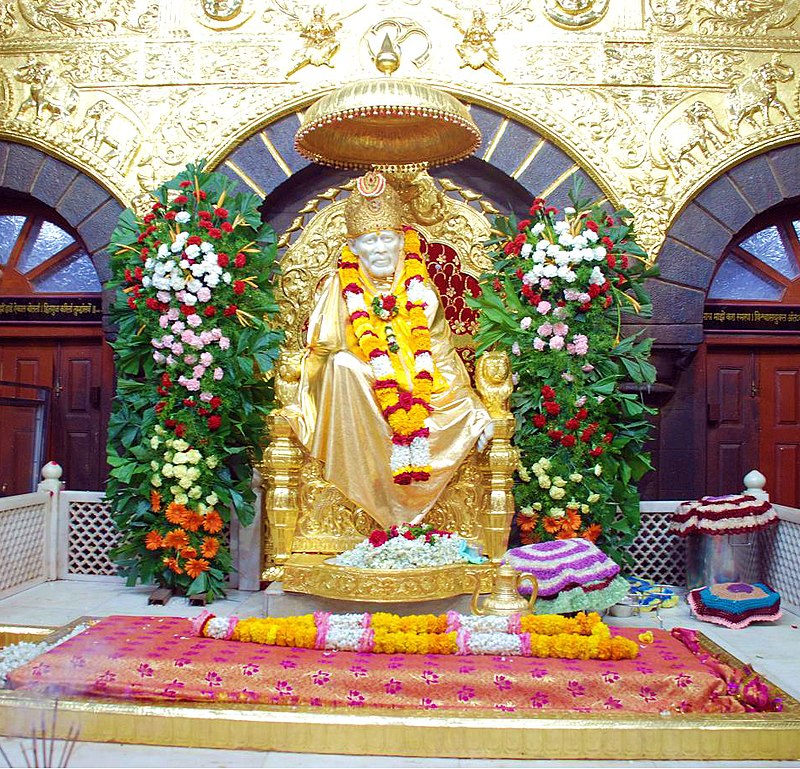
Image source: Wikipedia.org
The Shirdi Sai Baba temple, which was built in memory of Saint Sai Baba, also houses the saint’s Samadhi. It is one of the few famous temples of India that welcomes people of all faiths, and it is located in the small town of Shirdi in Maharashtra. Devotees still listen to and read Sai Baba’s teachings, which preach unity and peace. ‘Shraddha-saburi,’ which means faith and compassion, is one of Sai Baba’s most famous quotes. Thousands of devotees flock to the temple every day to pay their respects to one of the country’s most simple and revered saints.
10. Kedarnath
Image Source: Wikimedia Commons
The Kedarnath Temple is another pride symbol of the Garhwal Himalayan range. This is the next pilgrimage site on the yatra if you’re doing the Chota Char Dham. It is located in the Rudraprayag district, near the Mandakini River, in a town of the same name. It is thought that the Pandavas were the ones who built this pious Hindu temple. Kedarnath is also a sacred Shiva shrine and one of the 12 Jyotirlingas. Pilgrims can visit this famous Shiva temple from April to November, but it is closed during the winter. In addition, pilgrims must trek for 14 kilometres to reach Lord Shiva’s abode.
11. Badrinath
Source: Pixabay
The temple of Badrinath, which is steeped in Lord Vishnu worship, stands in all its glory in the Garhwal hills. This is one of the famous temples of India taking a place during the Char Dham Yatra. It takes its name from the town in which it is located. Not only that, but this Hindu pilgrimage site is also one of the 108 Divya Desams dedicated to Lord Vishnu. Lord Vishnu is worshipped as Badrinarayan, a black stone statue that represents Lord Vishnu. Many Hindus believe that this statue is one of the eight swayam vyakta kshetras (naturally arisen idol). Vaishnavites from all over the world flock to the temple from April to November, when it is open.
12. Bramha Temple, Pushkar

Image Source: Nidhi Srivastava (Flickr)
When visiting Rajasthan, Pushkar appears to be a good place to start your religious tour. When you cut through the crowds, you’ll come across this well-known temple dedicated to Brahma, the Hindu creator. It’s also worth noting that this is one of India’s few Brahma temples. Furthermore, many legends claim that the Pushkar Lake was formed by the petals of Lord Brahma’s lotus (his weapon).
13. Somnath Temple

Image source: Wikipedia.org
As one of the 12 Jyotirlingas, the Somnath temple is a significant temple in India. It is one of the oldest and most famous temples of India, located in Saurashtra, Gujarat, and references to the Somnath temple can be found in ancient Hindu texts. It’s also known as the ‘Shrine Eternal,’ because it’s been rebuilt several times after being damaged during various attacks.
14. Kashi Vishwanath Temple, Varanasi
Source: Flickr
The Kashi Vishwanath temple is unquestionably one of the holiest and most famous temples of India. It is dedicated to Lord Shiva and is located on the banks of the Ganga in the city of Kashi in the Uttar Pradesh state of Varanasi. It is one of the country’s 12 Jyotirlingas, and thus holds special significance for Hindus. It is believed that devotees who visit the temple after bathing in the Ganges and offer prayers achieve Moksha, or salvation. A large Shivalinga, about 60 cm tall and 90 cm wide, can be found in the temple.
15. Brihadeeswara Temple, Tamil Nadu
Source: Wikimedia Commons
Brihadeeswara Temple, located in Thanjavur, Tamil Nadu, is one of the largest South Indian temples. This 11th-century temple, also known as Peruvudaiyar Kovil and RajaRajeswaram, was built by Chola emperor Raja Raja Chola I. The Cholas are known for their love of art. The grand and magnificent architecture of the temple reflects the Cholas’ opulence and artistic proficiency. It was constructed entirely of granite stone and according to Vaastu Shastra principles. The most striking feature of this UNESCO World Heritage Site is that at noon, it casts no shadow on the ground. The temple, which is dedicated to Lord Shiva, emphasises the importance of religious beliefs in Hinduism.
16. Ramanathaswamy Temple, Rameshwaram
Source: Wikimedia Commons
Ramanathaswamy Temple is located in Rameshwaram, a small island in Tamil Nadu, and is one of the holy Char Dham temples. It is sacred because it is thought that Lord Rama and Sita first arrived here after defeating Ravana, who had kidnapped Sita. The Ramalingam and the Vishwalingam are two Shiva Lingams that can be found here. Sita created the Ramalingam, and Lord Hanuman brought the other lingam here. It has stunning architecture as well as the world’s longest corridor. It is also one of the country’s 12 Jyotirlingas, so the temple holds special significance and attracts thousands of devotees every day.
17. Meenakshi Temple, Madurai

Image source: Wikipedia.org
The Meenakshi temple, located in Madurai, Tamil Nadu, is an architectural marvel and one of the most famous temples of South India. It honours goddess Meenakshi, also known as Parvati, and her husband, Lord Shiva. The temple’s 14 gopurams, thousand pillars, a golden vimana over the sanctum, and around 33,000 sculptures make it one of a kind. The temple is also one of the largest in terms of area, covering approximately 45 acres.
18. Gangotri Temple, Uttarakhand
Source: Wikimedia Commons
The Gangotri temple, which is thought to have been built in the 18th century, is where Ganga originates. The Gangotri temple, located in the Uttarkashi district, is where Lord Shiva is said to have accepted Ganga in his hair. The temple, which is made of white granite, is one of India’s holiest pilgrimage sites. The temple is only open once a year, in April or May, when the idol is transferred from the Mukkyamath temple to the Gangotri temple, where it is kept for the rest of the year.
19. Tirumala Venkateswara Temple
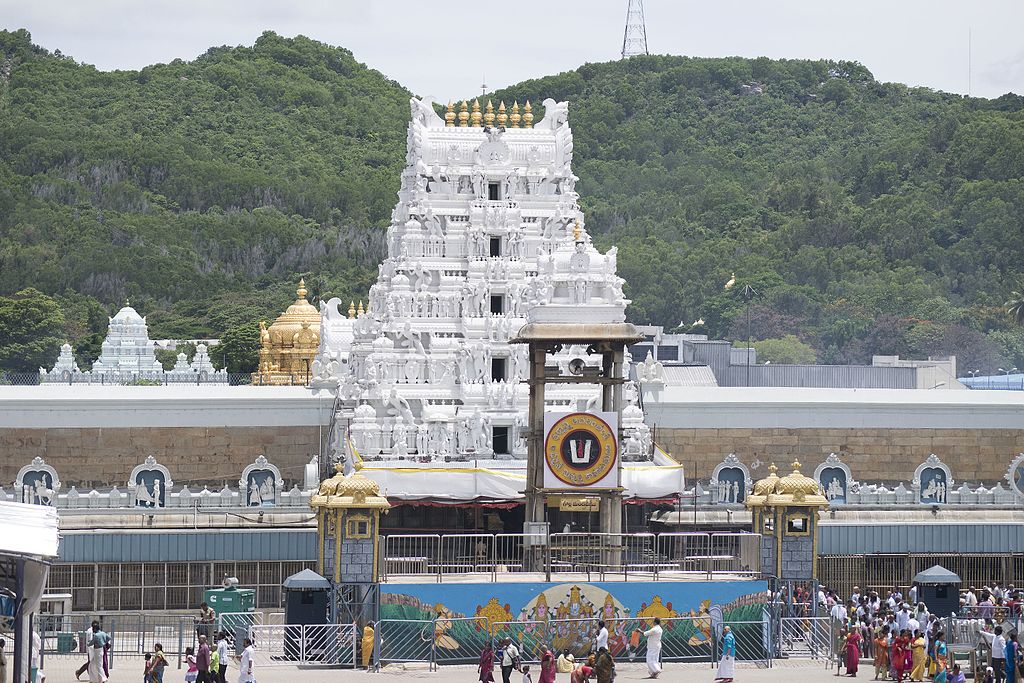
Image source: Wikipedia.org
Tirumala Venkateswara temple in Tirupati, Andhra Pradesh is the official name of the temple. Daily, at least a lakh or more devotees are estimated to visit the temple. It is dedicated to Lord Venkateshwara, an incarnation of Lord Vishnu, also known as Lord Balaji, and is located in the Tirumala hills. The ‘Brahmotsavam’ festival, which takes place in September and attracts millions of devotees from all over the world, is one of the temple’s most famous events. Offering one’s own hair is a ritual here, so many male and female devotees have their heads tonsured as an offering to the Lord. The prasad, or temple offering, is also known as laddoos, a sweet.
20. Shri Ram Temple, Ayodhya
Lord Shri Ram’s temple in Ayodhya will have its foundation laid by the end of September or the first week of October this year, and Ram Lalla will be consecrated in the temple’s ‘garbhagriha’ (sanctum sanctorum) by December 2023, when devotees will be able to see him.

Image Source: @ShriRamTeerth on Twitter
21. Golden Temple

Image source: Wikipedia.org
Sri Harmandir Sahib, the Sikhs’ most important and religious site, is dressed as a golden beauty. Guru Arjan Sahib, the Fifth Nanak, had the idea of carving out a place for all Sikhs to come and remember God in their ardas. Guru Arjan Sahib designed the architecture as well, as he wanted to excavate the Sarovar (holy pool) and build a town settlement. Furthermore, Hazrat Mian Mir Ji of Lahore, a Muslim saint, laid the foundation stone of the Golden Temple. By 1601, the entire shrine had been completed, and Sikhs have regarded it as their most sacred place of worship ever since.
Because India is home to a large number of temples, ranking them among the famous temples of India can be difficult at times. Each temple has a fascinating story to tell.



